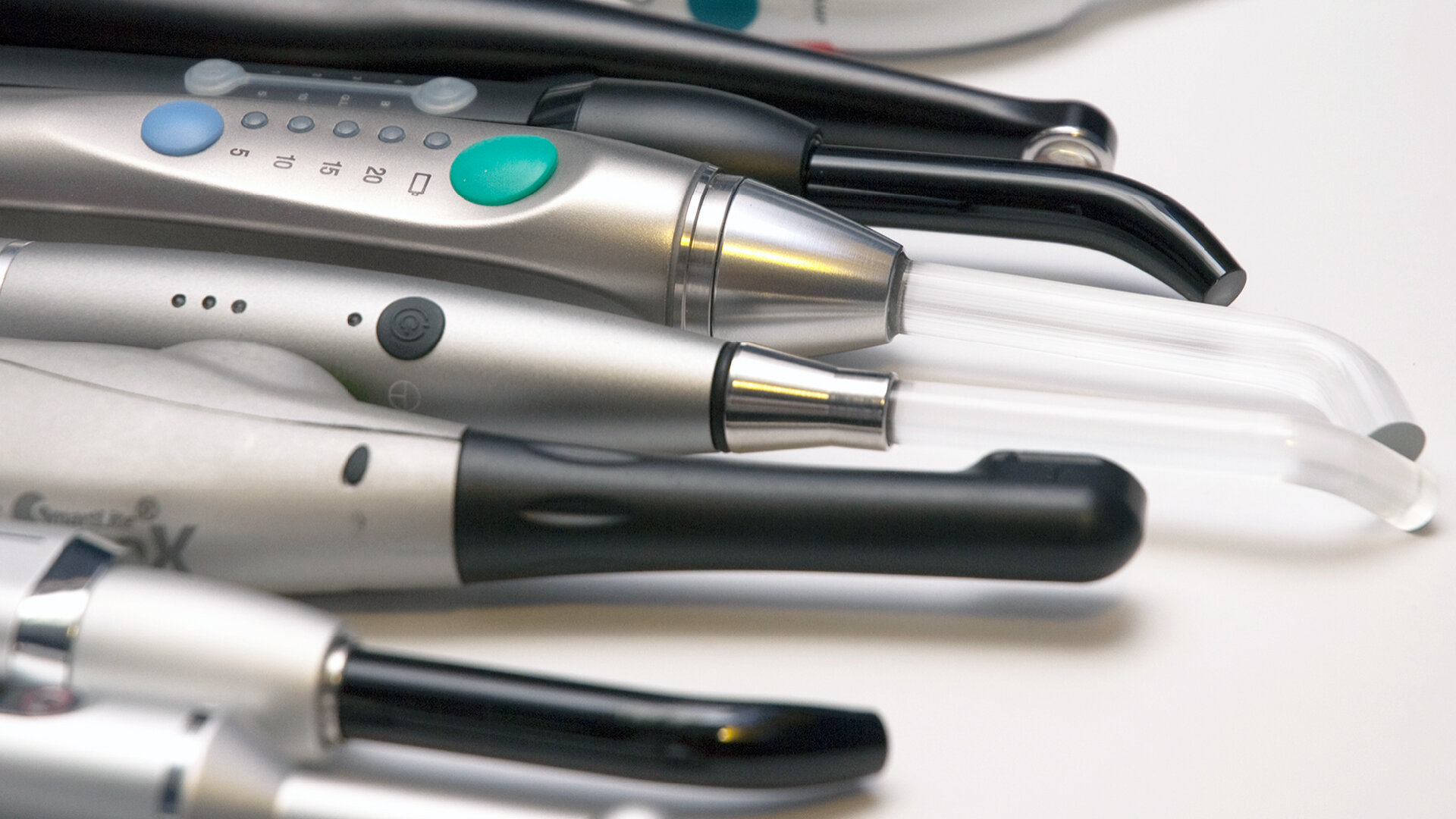How CheckUp Measures Dental Curing Lights Accurately
Accuracy is a valuable commodity for dentists. The accuracy of a dentist’s equipment should match the precision of their work. Curing lights and the devices used to test them are no exception.
If dentists have an accurate understanding of how their curing lights are performing, then they can adapt their curing technique accordingly and increase the likelihood of successful patient outcomes.
The most common device dentists use to measure their curing lights is a radiometer. Traditional radiometers have limitations, but the Bluelight CheckUp Radiometer is different and can accurately measure all major curing light models.
In this blog we answer some key questions dentists ask us about CheckUp, its accuracy, and its compatibility with different curing lights.
Click below to skip ahead:
How is CheckUp different to other dental radiometers?
Radiometers are handy devices that dentists can use to measure their curing lights in their own office, in their own time. However, traditional radiometers have notable limitations:
They can only give a relative measure of irradiance
They cannot account for active diameter or multiple light modes
They cannot account for wavelength
They can only be calibrated to one light source and light tip combination
Their measurements represent the peak output, not the average
The Bluelight CheckUp Radiometer is different for two key reasons. Firstly, it has a large sensor that can collect all of the light emitted when a curing light is tested. It sounds simple, but many radiometers have much smaller sensors.
The second reason, is the calibration of CheckUp’s non-linear sensor. CheckUp uses a machine learning algorithm, which is trained by thousands of measurements taken with a laboratory-grade integrating sphere and spectrometer system. The algorithm compares and adjusts for different curing light characteristics, ensuring that each test result has the highest level of accuracy.
It’s because of this that CheckUp can measure all types of curing light and give accurate readings for lights with different tip diameters and light modes, (like ramp and pulse).
Whenever a new curing light hits the market, Bluelight’s scientists put it through a rigorous assessment to ensure compatibility with CheckUp and the accuracy of its measurements. We consider not just the total power of the light (how much power is exiting the light tip in mW), but also:
Spectrum (mW/nm)
Active area (cm2)
Irradiance (mW/cm2)
Irradiance at distance (mW/cm2)
Beam profile
Heat generation
Endurance
ISO 10650 compliance
ISO 4049 depth of cure
How accurate is CheckUp at measuring dental curing lights?
An independent study by the University of Birmingham used the CheckUp Radiometer to test 16 commonly used curing lights.
These lights represented two different types of tip design – those with a fiber-bundle light guide (e.g. Elipar DeepCure) and those with the light source at the tip (e.g. Valo Grand).
The purpose of the study was to compare the accuracy of CheckUp with absolute measurements taken from a laboratory-grade integrating sphere and spectrometer setup. This equipment provides the gold standard in light measurement, and is far beyond what any dentist would typically have access to.
The study found that CheckUp had an average +/- 5% accuracy when compared to the integrated sphere – in other words, the accuracy of its measurements was incredibly close to the benchmark of light measurement technology.
By comparison, the accuracy of the other radiometers tested in the study was as far off as +/- 100%. They seemed to particularly struggle with accurately measuring LED curing lights with the light source at the tip.
This diagram shows the percentage difference in irradiance values for each radiometer tested relative to the integrating sphere measurements. The smaller the range, and the closer to the 100% midline, the better.
When testing the Valo Grand for example, the other radiometers in the study returned readings between 14% and 29% above or below the the integrated sphere measurements. CheckUp was within 2.2%.
What do the results of this study mean for dentists?
Essentially, the University of Birmingham study shows that dentists can rely on CheckUp to accurately measure their curing lights and inform their curing protocols.
Using the other radiometers evaluated in this study may give you an incomplete or inaccurate understanding of how your light is performing. If you took some of those measurements at face value, that could mean operating a curing light in a patient’s mouth when it is emitting 30% more or less power than you expect.
This could lead to overcuring and damage to a patient’s soft tissue, or undercuring, and an increased risk of the early failure of a composite restoration. The study highlights this danger:
“Substantial discrepancies may occur between true and estimated radiometric data using current commercial dental radiometers, which may affect the light curing unit users’ ability to judge sufficient light exposure critical for successful curing”.
CheckUp on the other hand presents an accurate, reliable solution for dentists to test their curing lights.
“There is a need for more accurate dental radiometers that could be realized with the novel light measurement device CheckUp”.
Can I test my dental curing light with CheckUp?
CheckUp is able to measure all major curing light models, so the answer is probably yes! We have over 600 curing light models in our database of over 133,000 light evaluations across 29,000 clinics.
Here are the most popular lights tested by CheckUp customers:
VALO Cordless
VALO Grand
VALO Corded
Elipar S10
Elipar DeepCure-S
Bluephase Style
Demi Plus
Paradigm DeepCure
The Cure (TC-01)
Bluephase
SiriusMax
SPEC 3
CheckUp is able to measure all of these lights accurately thanks to the size of its sensor (17mm compared to 7mm for some other radiometers), and its use of artificial intelligence.
If you have questions about CheckUp's compatibility with specific curing lights, please get in touch. Click below to find out more about how CheckUp works and the benefits it could bring to your dental practice.



